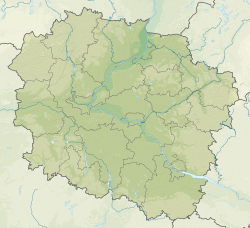This article includes a list of references, related reading, or external links, but its sources remain unclear because it lacks inline citations .(September 2014) |
You can help expand this article with text translated from the corresponding article in German. (June 2022)Click [show] for important translation instructions.
|
| Siege of Thorn | |||||||||
|---|---|---|---|---|---|---|---|---|---|
| Part of the Great Northern War | |||||||||
 Siege of Thorn, 1703 | |||||||||
| |||||||||
| Belligerents | |||||||||
| | |||||||||
| Commanders and leaders | |||||||||
| | | ||||||||
| Strength | |||||||||
| 26,000 men[ citation needed ] | 6,000 men[ citation needed ] | ||||||||
| Casualties and losses | |||||||||
| 40 dead 70 wounded [1] | 1,000 dead 4,860 captured[ citation needed ] | ||||||||
Location within Kuyavian-Pomeranian Voivodeship | |||||||||
The siege of Thorn was set during the Great Northern War, between Sweden and Saxony from May to October 14, 1703. The Swedish army was commanded by Charles XII of Sweden and the Saxon by General von Kanitz. The siege ended with a victory for Sweden, and the whole garrison surrendered to the Swedes. Following the capture of Thorn, the city was forced to pay some 100,000 reichsthaler. [2]


